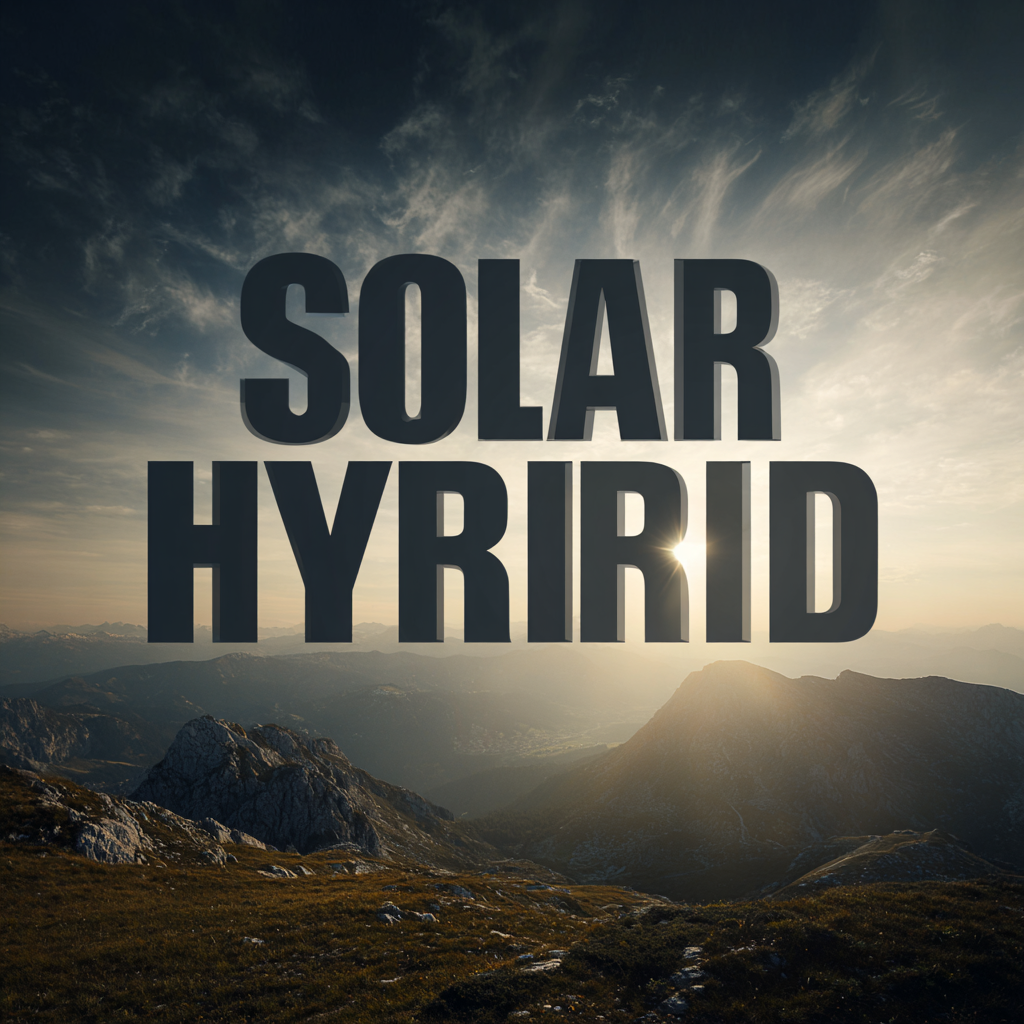Unveiling the Best Solar Hybrid Specs and How to Maximize Its Performance
As the world increasingly shifts towards sustainable energy solutions, the demand for efficient and innovative systems like Solar Hybrid installations is on the rise. According to a report by the International Renewable Energy Agency (IRENA), solar power could potentially provide up to 24% of global electricity by 2030, with hybrid systems playing a vital role in this transition.
 Solar Hybrid systems, which combine solar energy generation with traditional power sources, not only enhance energy reliability but also maximize performance by leveraging the strengths of both technologies. Understanding the best specifications and operational strategies for these systems is crucial for homeowners and businesses alike. In this guide, we'll delve into the best Solar Hybrid specs available today and explore proven methods to optimize their performance for a greener, more energy-efficient future.
Solar Hybrid systems, which combine solar energy generation with traditional power sources, not only enhance energy reliability but also maximize performance by leveraging the strengths of both technologies. Understanding the best specifications and operational strategies for these systems is crucial for homeowners and businesses alike. In this guide, we'll delve into the best Solar Hybrid specs available today and explore proven methods to optimize their performance for a greener, more energy-efficient future.
Understanding Solar Hybrid Systems: Key Components and Their Functions
Solar hybrid systems are gaining traction due to their ability to combine both solar energy and traditional power sources. At the heart of these systems lies a few key components: solar panels, inverters, batteries, and an energy management system. Solar panels capture sunlight and convert it into electricity, while inverters transform the generated DC power into usable AC power for home appliances. Batteries store excess energy generated during sunny periods, ensuring a continuous power supply even when the sun isn’t shining. Lastly, the energy management system optimizes energy usage, balancing the load between solar production and grid electricity.
To maximize the performance of your solar hybrid system, consider these tips:
- Place solar panels in locations that receive maximum sunlight exposure, avoiding shadows from trees or buildings.
- Regularly maintain and clean the panels to ensure they are operating at peak efficiency.
- Monitor your energy consumption patterns and adjust your usage habits to take full advantage of solar energy during peak production hours, reducing reliance on the grid and enhancing the overall efficiency of your hybrid system.
Comparative Analysis of Solar Hybrid Power Ratings and Efficiency Metrics
In the evolving realm of renewable energy, a comparative analysis of solar hybrid systems versus single-source systems reveals critical insights into their power ratings and efficiency metrics. Recent studies emphasized the effectiveness of Maximum Power Point Tracking (MPPT) compared to direct coupling methods in optimizing photovoltaic (PV) systems for enhanced energy output. This assessment underscores the necessity of selecting appropriate control strategies that harmonize with specific building energy demands, thus ensuring sustainability and increased efficiency.
Moreover, environmental factors can significantly impact photovoltaic performance, causing losses of up to 70% under adverse conditions. Implementing mitigation strategies, such as wind-induced cooling, can help recover some of these losses, making it imperative to analyze how diverse operational conditions affect system efficiency. In rural areas, hybrid renewable energy systems, integrating PV with wind and thermal storage, represent a viable solution for achieving stable and clean power generation. Such comprehensive analyses pave the way for optimizing hybrid systems, which not only address local energy needs but also contribute toward reducing the overall carbon footprint.
Optimal Sizing of Solar Hybrid Systems for Residential and Commercial Use
When it comes to optimal sizing of solar hybrid systems, careful consideration is paramount for both residential and commercial applications. A recent study focusing on commercial buildings in China emphasizes the integration of rooftop photovoltaics (PV), cooling storage, and battery systems as a hybrid solution to enhance energy flexibility. Such systems allow for effective load management and reduce reliance on the grid, ultimately leading to significant cost savings and decreased environmental impact.
Additionally, the techno-economic evaluation of hybrid PV-battery systems has shown substantial benefits in various regions. In countries like Canada, tools such as the Solar Alone Multi-objective Advisor (SAMA) provide essential insights for optimizing system designs based on local conditions and economic factors. The optimal sizing of these hybrid systems not only improves efficiency but also contributes to the sustainable development of energy infrastructures, particularly in remote or underserved communities where access to reliable electricity remains a challenge. By understanding the specific energy demands and environmental factors of a location, stakeholders can better tailor hybrid systems to meet their needs effectively.
Maintenance Best Practices to Enhance Solar Hybrid Performance and Longevity
Maintaining your solar hybrid system is crucial for maximizing its performance and longevity. Regular maintenance not only ensures optimal energy output but also extends the lifespan of your components. According to a report by the National Renewable Energy Laboratory, systems that undergo routine maintenance can achieve efficiency gains of up to 15%. This highlights the importance of scheduling inspections and promptly addressing issues that may arise.

One key practice is to keep the solar panels clean, as dirt and debris can significantly reduce their efficiency. In fact, studies show that unclean panels can lead to up to a 25% loss in energy production. Ensure that the panels are free from obstructions and consider using a soft cloth or specialized cleaning equipment to avoid scratching the surface.
Additionally, regularly checking the inverter’s performance is essential. The inverter is the heart of your hybrid system, converting solar energy into usable electricity. Experts recommend monitoring the inverter's output regularly; any significant deviation from expected performance may indicate a need for repairs. By following these best practices, you can enhance the efficiency and overall lifespan of your solar hybrid system.
Future Trends in Solar Hybrid Technology: Innovations and Market Projections
The solar hybrid technology landscape is rapidly evolving, with the market projected to witness substantial growth. According to industry reports, the global solar market is expected to expand significantly, driven by advancements in photovoltaic (PV) systems and concentrated solar power (CSP) technologies. By 2024, the solar hybrid market is forecasted to grow at a compound annual growth rate (CAGR) of over 7.68%, indicating a promising future for solar applications in electricity generation, lighting, and heating across residential, commercial, and industrial sectors.

To maximize the performance of solar hybrid systems, here are a few tips:
- First, ensure optimal placement of solar panels, considering factors like sunlight exposure and shading from nearby structures.
- Regular maintenance, including cleaning the panels and checking electrical connections, can significantly enhance efficiency.
- Lastly, integrating energy storage solutions can help manage power supply more effectively, optimizing both usage and cost savings.
As we look toward 2032, the luxury yacht segment is also imbued with opportunities, expected to grow from a market value of $12.6687 billion in 2023 to approximately $24.65573 billion, fostering innovations in sustainable energy use. This intersection of luxury and sustainability showcases the increasing importance of solar hybrid technologies within diverse sectors, paving the way for a greener future.
